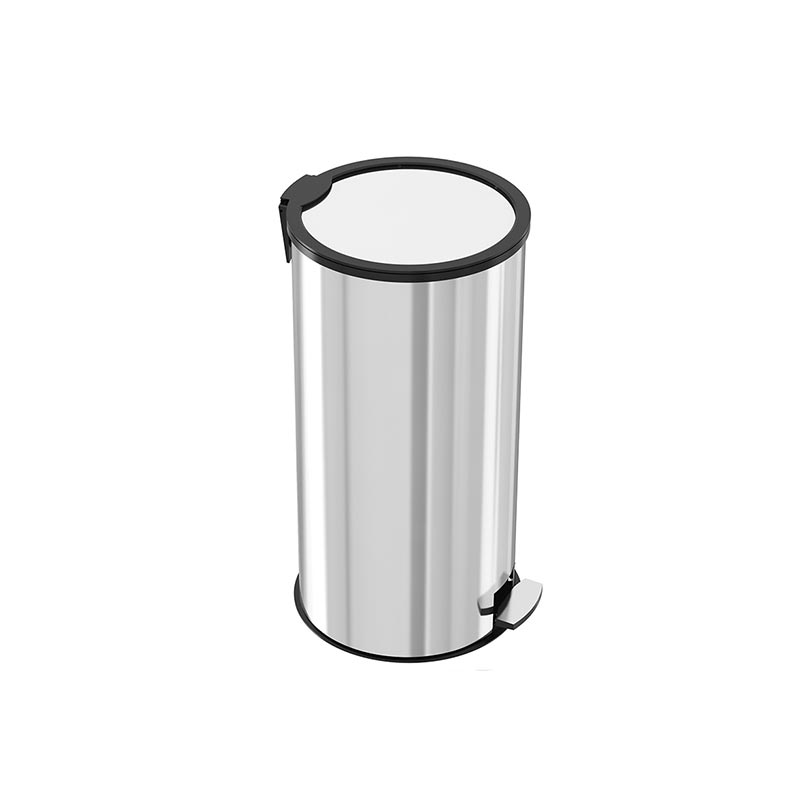Hospital pedal trash bin – akaelectric
AkaElectric is the largest manufacturer of hospital waste bins in Iran, which has produced both pedal bins for the infectious department of the hospital and a variety of luxury trash bins for hospital halls and inpatient rooms are the products of this industrial group.
Type 1: Pedal trash is a steel hospital that is equipped with a sliding door. This trash can is produced with a separate internal bin compartment from 3 liters to 30 liters, which is the best option for hospitals. The best size for hospitals is 30 liters. Its height is 60 cm. A hospital pedal trash can with a very beautiful appearance is a good option for hospital interiors or hospital corridors and footpaths.
Type two: Sabalan model hospital pedal trash can, which has a very light door with a sound mechanism produced by air and does not need to be restrained. This type of trash can probably be called the best hospital pedal trash because its pedal mechanism has an extraordinary life.
AkaElectric is the only manufacturer of this type of bucket in Iran. The plastic inner tank of the bucket is the same as the body of 60 cm and 30 liters. This waste bin is made of 430 stainless steel with anti-stain coating and is cheaper than model number one.
Sabalan Hospital pedal bin has a special beauty with the harmony of parts and is a good option for hospital inns or corridors and footpaths.
Reminders of color codes for sanitary waste management:
If you are in charge of hospital waste management, veterinary surgery or a pharmacist, it is important to use the best color separation method to separate the waste. Trash cans are usually considered for each color code to properly separate and dispose of hospital waste.
To help keep you on track, we’ve put together a quick reminder of the different color codes you should use when littering.
 Yellow (clinical / highly infectious):
Yellow (clinical / highly infectious):
This is for disposing of infectious waste that must be sent to an authorized incinerator. This type of waste should not be sent for disinfection or reuse. Examples of infectious lesions include: contaminated chemical samples and diagnostic kits and laboratory samples.
Waste example:
Roll band
Wipes
Gloves
bandage
Band
Apron
Disposable clothing etc. contaminated with infectious body fluids
 Orange (clinical / infectious):
Orange (clinical / infectious):
This is for the disposal of infectious waste that is sent for disinfection and reuse. This waste is sometimes usable and some of them are buried or incinerated in the ground after disinfection and immunization. Examples of types of waste suitable for this procedure include clothing, bedding, bandages, and protective clothing.
Status: Dangerous / Non-Dangerous
Types of waste:
clothes
Bed
Band
Protective clothing.
 Purple (cytotoxic / cytostatic):
Purple (cytotoxic / cytostatic):
For the remainder of toxic or cytostatic drugs or those contaminated with these substances, they should be sent to a facility with an authorized facility for incineration. This type of waste includes containers with residues of cytotoxic or cytostatic drugs and knives and sharp tools used in treatment with cytotoxic or cytostatic drugs.Status: Dangerous
Waste example:
Blister packaging
Tablets in containers
Unopened vials of drugs
Gloves, clothing, aprons, wipes contaminated with cytotoxic and / or cytostatic drugs
 Yellow and black (offensive):
Yellow and black (offensive):
Known as the tiger, this color scheme is a symbol of non-infectious, invasive / hygienic waste that may be recycled, incinerated (for energy production) or buried deep. This type of waste can include items that are contaminated with body fluids, such as incontinence pads, catheter bags, and delivery waste.
Status: Non-dangerous
Waste example:
Colostomy bags
Incontinence pads
Diapers and wipes
Gloves
Disposable clothing etc. contaminated with non-infectious body fluids
 Red (anatomical):
Red (anatomical):
If you see a red code, you just have to send it to an authorized disposal center for anatomical waste disposal. Anatomical debris can move everything from recognizable parts of the body to the placenta.
Status: Dangerous / Non-Dangerous
Waste example:
Organ
Organs
Blood bags
Clot
 Blue (medicinal):
Blue (medicinal):
Waste example:
Tablets in containers
Blister packaging
Unopened vials of drugs
Liquids in bottles
Inhalation cartridges
Drip bottles with pipette
 White (Dental – Amalgam and casting plasters):
White (Dental – Amalgam and casting plasters):
Typically for dental waste, white coding for hazardous materials such as dental and mercury amalgam, extra-mixed amalgam and amalgam separating contents to be used through recycling or recycling.
- Status: Non-dangerous
Waste example:
Unwanted amalgam
Old filling
Teeth are full
cutting
Extra amalgam that can not be reused
Packaging and capsules containing residual materials
Dental study templates
 Black (urban mix):
Black (urban mix):
It should be used for household or municipal waste and should not contain hazardous substances, chemicals or medicines. For example, the items you usually find in this type of waste are food and tissue.
Waste example:
Packaging (bottles – cartons, etc.)
Napkins and papers
Drink cans
Food leftovers
Flowers and plants

For ordering or more information, you can call +982177739477 or contact us via email info@akaelectric.ir.

